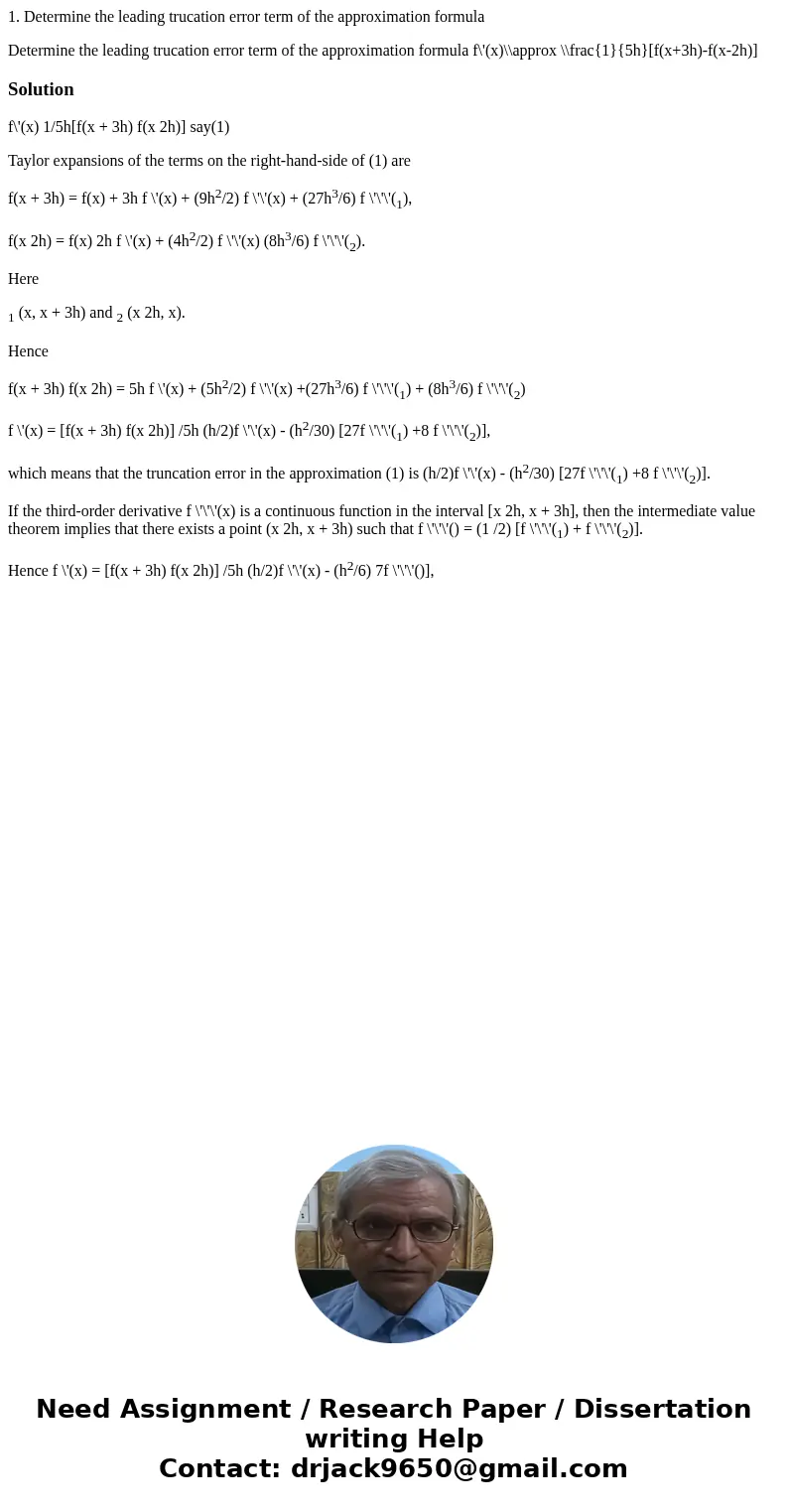1 Determine the leading trucation error term of the approxim
1. Determine the leading trucation error term of the approximation formula
Determine the leading trucation error term of the approximation formula f\'(x)\\approx \\frac{1}{5h}[f(x+3h)-f(x-2h)]Solution
f\'(x) 1/5h[f(x + 3h) f(x 2h)] say(1)
Taylor expansions of the terms on the right-hand-side of (1) are
f(x + 3h) = f(x) + 3h f \'(x) + (9h2/2) f \'\'(x) + (27h3/6) f \'\'\'(1),
f(x 2h) = f(x) 2h f \'(x) + (4h2/2) f \'\'(x) (8h3/6) f \'\'\'(2).
Here
1 (x, x + 3h) and 2 (x 2h, x).
Hence
f(x + 3h) f(x 2h) = 5h f \'(x) + (5h2/2) f \'\'(x) +(27h3/6) f \'\'\'(1) + (8h3/6) f \'\'\'(2)
f \'(x) = [f(x + 3h) f(x 2h)] /5h (h/2)f \'\'(x) - (h2/30) [27f \'\'\'(1) +8 f \'\'\'(2)],
which means that the truncation error in the approximation (1) is (h/2)f \'\'(x) - (h2/30) [27f \'\'\'(1) +8 f \'\'\'(2)].
If the third-order derivative f \'\'\'(x) is a continuous function in the interval [x 2h, x + 3h], then the intermediate value theorem implies that there exists a point (x 2h, x + 3h) such that f \'\'\'() = (1 /2) [f \'\'\'(1) + f \'\'\'(2)].
Hence f \'(x) = [f(x + 3h) f(x 2h)] /5h (h/2)f \'\'(x) - (h2/6) 7f \'\'\'()],

 Homework Sourse
Homework Sourse